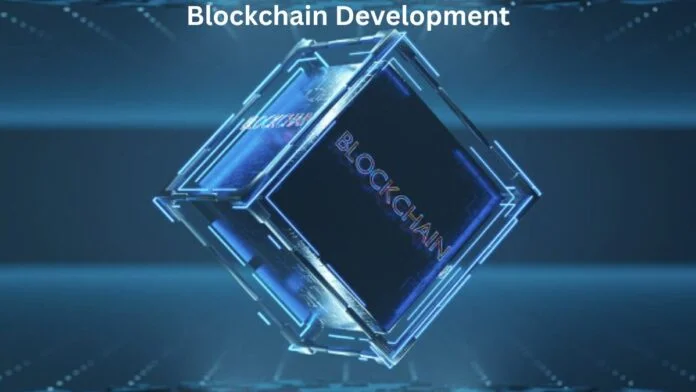Blockchain technology offers a transparent, safe, and unchangeable platform for exchanging and storing academic records, potentially transforming the education industry completely. With the growing acceptance of blockchain technology, the education sector will witness the emergence of novel and inventive use cases.
How Blockchain Could Upend The Education Industry
The educational landscape has changed dramatically from traditional classroom settings to eLearning and now blended learning. Schools worldwide started utilizing online platforms and learning management systems (LMSs) to teach pupils due to the COVID-19 epidemic, which hastened the adoption of digital learning. Blockchain technology has the potential to transform the education sector completely. Blockchain has the power to completely change how educators and students communicate and how academic data is handled. Let’s examine the potential future effects of blockchain technology on schooling.
6 Major Effects of Blockchain on Education
1. Intelligent Contracts for Classes and Tasks
Additionally, blockchain-based smart contracts may facilitate the work of educators. Code that is automatically executed when specific criteria are satisfied and written into a blockchain is known as a smart contract. Distributing and managing course materials can also be done with smart contracts. The delivery of readings, videos, and quizzes, as well as the tracking of student progress and assignment fulfillment, can be automated with their help. This can lessen the amount of effort associated with administration and enhance how well courses are organized overall.
2. Maintaining Student Records
With the rise of online learning comes an increase in the phony degrees and certifications market. Around the world, many companies and educational institutions are taking serious notice of this. Therefore, the institutions can keep the certificates on the blocks as unchangeable entries, which is how a blockchain can easily handle this certification management problem. Students can easily share their credentials by including precise URLs in their social media profiles, email signatures, and resumes. A blockchain development company in New York offers certificate and identity management services of this kind. Because blockchain technology is decentralized, all documents are stored on it and are transparent, verifiable, and immutable.
3. Using Crypto To Get Reward
When a student transfers schools, it’s a time-consuming process that requires a lot of work on the part of the administration, teacher, and student to transfer documents and get them confirmed. Schools and colleges can employ blockchain technology to expedite the verification process. We receive scholarships, trophies, and other incentives for our exceptional achievements in extracurricular and academic activities; however, blockchain technology also makes it possible for us to provide children with real prizes in the form of cryptocurrencies like bitcoins. In online learning environments, teachers might use gamification to incentivize their students to complete tasks or modules. The gamification features of learning management systems make tokenizing all incentives as a digital currency possible.
4. Digital Certificates And Badges
The development of safe, easily verifiable digital badges and certificates that can be showcased on one’s digital portfolios is one of the most significant uses of blockchain in eLearning. Peer-to-peer learning and collaboration can be encouraged and facilitated with the use of smart contracts. Students can be trained to receive rewards for participating in online forums or for giving constructive criticism to their classmates’ work. This can foster a more dynamic and involved learning environment while assisting students in honing their communication and critical thinking abilities.
5. Authenticity Certification Ease
The distributed ledger technology of blockchain can improve accountability and transparency in the educational sector. It can produce a tamper-proof, verifiable, and unchangeable record of educational data, such as transcripts, degrees, and certifications. This implies that employers can have total confidence in the abilities and knowledge of job seekers, and academic achievements can be verified with precision.
The procedure of transferring documentation and having it verified takes a while when a student moves schools. The implementation of blockchain technology in educational institutions can expedite the verification process. Allowing access to the blockchain allows student records to be effortlessly transferred to a new institution when a student changes schools. Certain blockchain development firms create and distribute certificates that are easily authenticated and unchangeable.
6. Lower Expense
This can also be applied to circumstances where students who visit other institutions as part of exchange programs can readily communicate their grades with those institutions by granting the required access, thereby lowering administrative expenses.
Conclusion
The pace at which virtual reality and augmented reality are merging with the real world has quickened, upending numerous global economic sectors. Unlike conventional centralized databases, blockchains, a more recent technology, offer greater efficiency and storage capacity. The financial sector is already undergoing change due to projects related to metaverse, blockchain, and cryptocurrencies. Therefore, including these in an academic curriculum would give young people more options, create an efficient, affordable framework that conveniently serves all socioeconomic groups, and increase outreach to all students. While ensuring that learning is enjoyable. All things considered, a blockchain development business can use blockchain technology to assist educational institutions in streamlining their operations, cutting expenses, and improving the quality of instruction.

